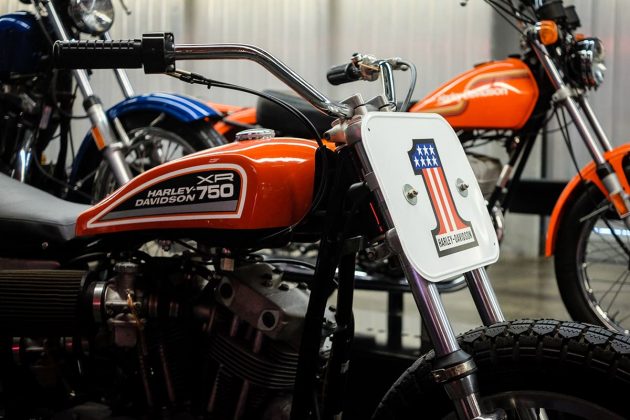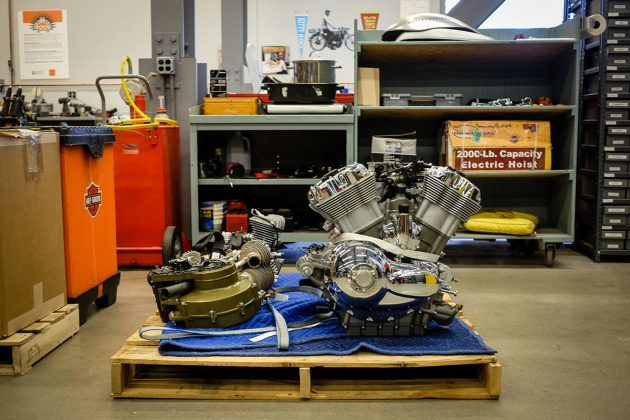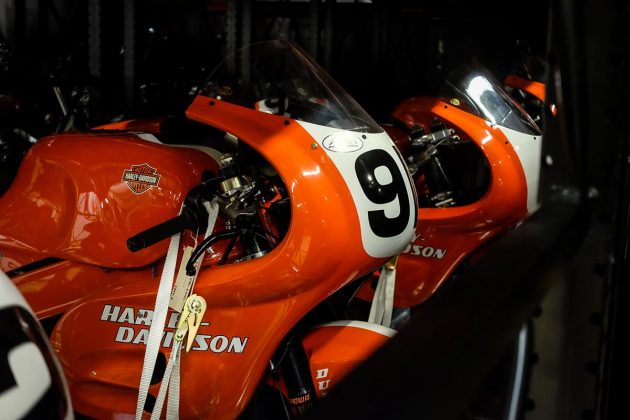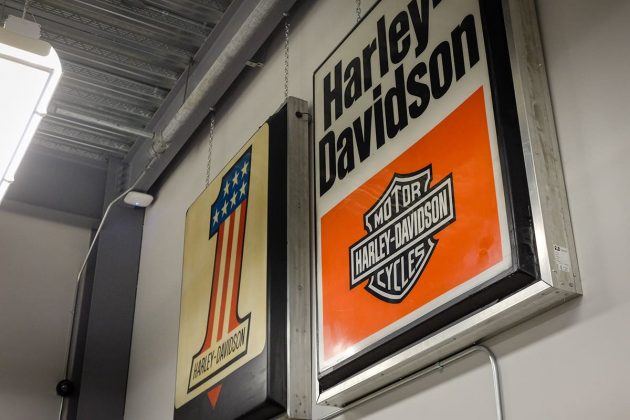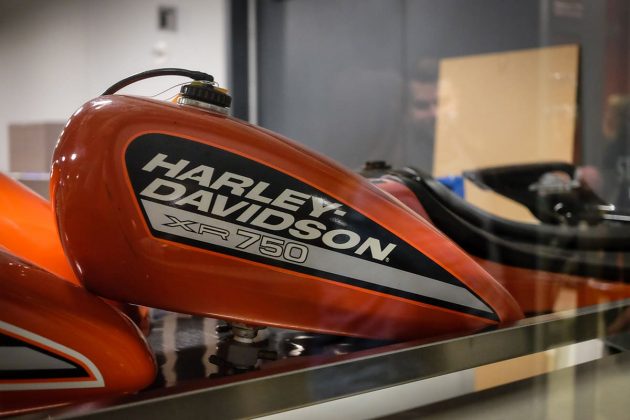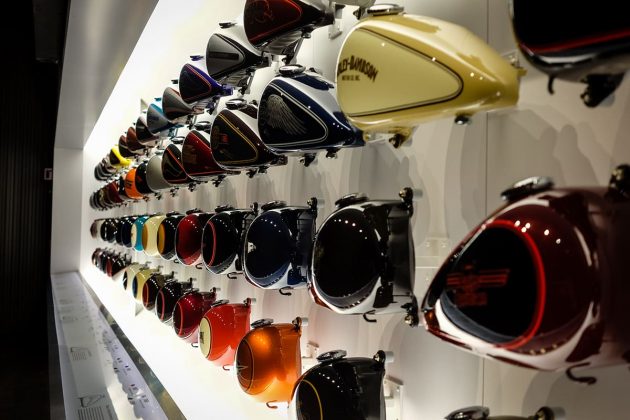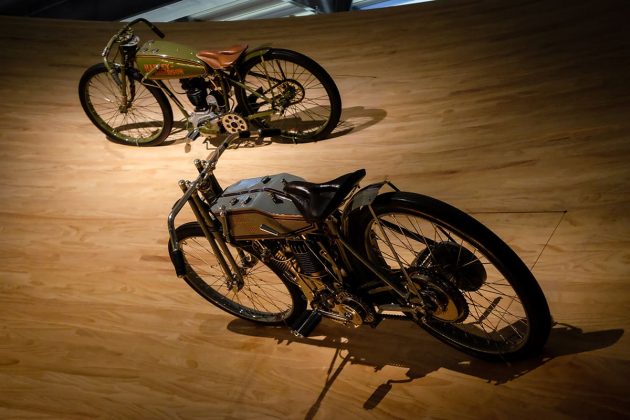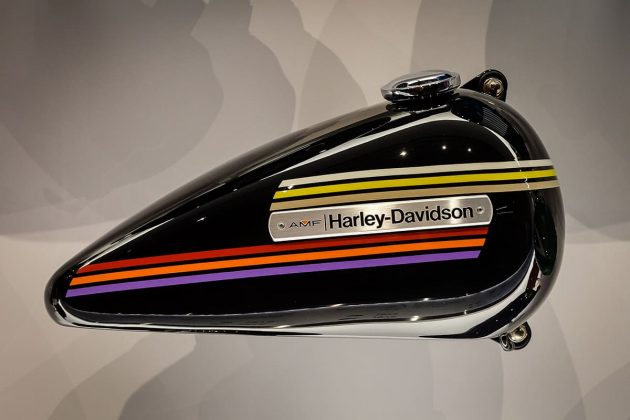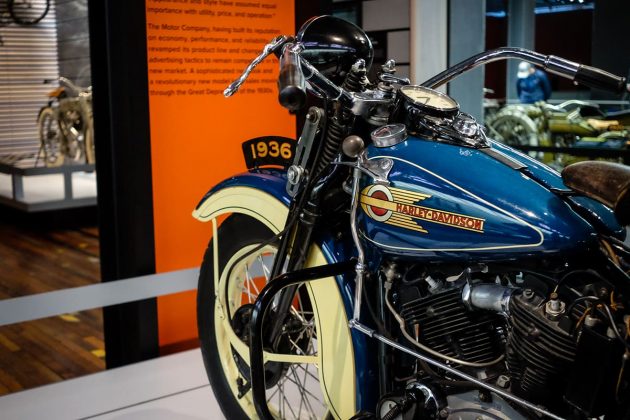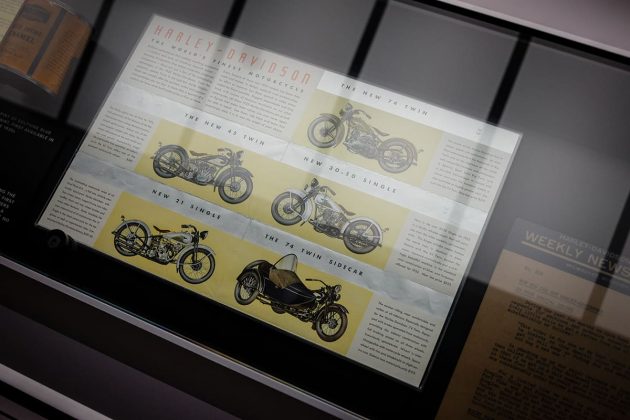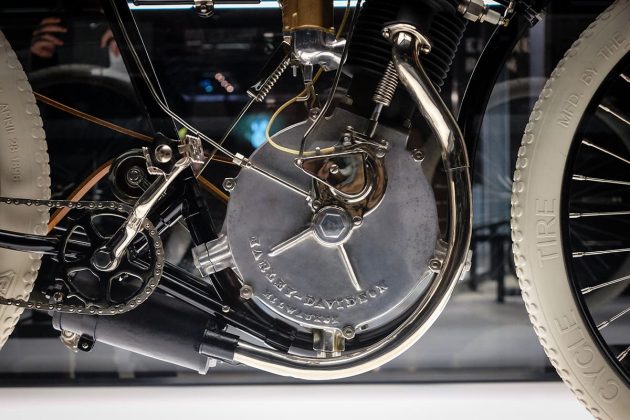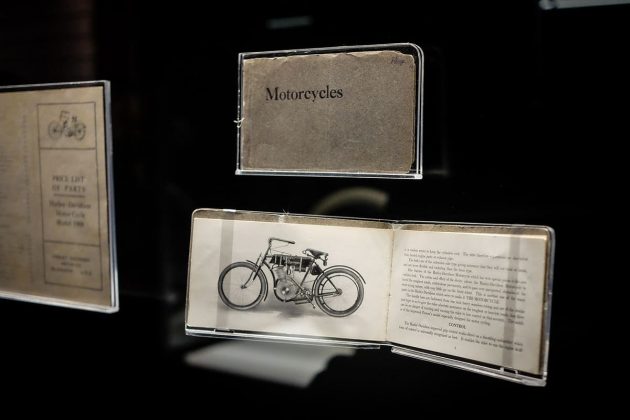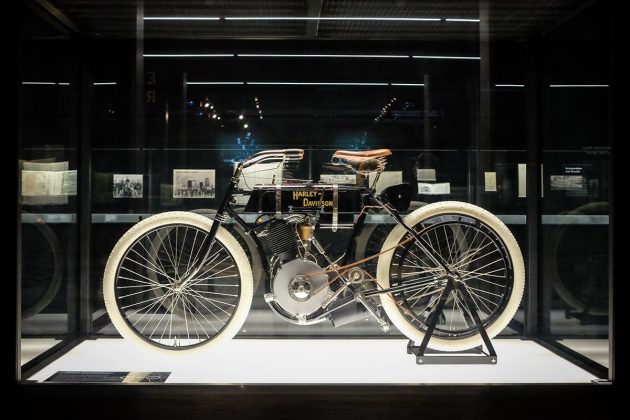
It’s a big year for Harley-Davidson. Not only is the Motor Co. celebrating its 115th anniversary, but the Harley-Davidson Museum—where all 115 years are on display—is turning ten.
On the scale of Harley-Davidson fandom, I’m somewhere near the middle. I enjoy some of their bikes and have more H-D apparel in my closet than I should probably admit—but I’m no die-hard.
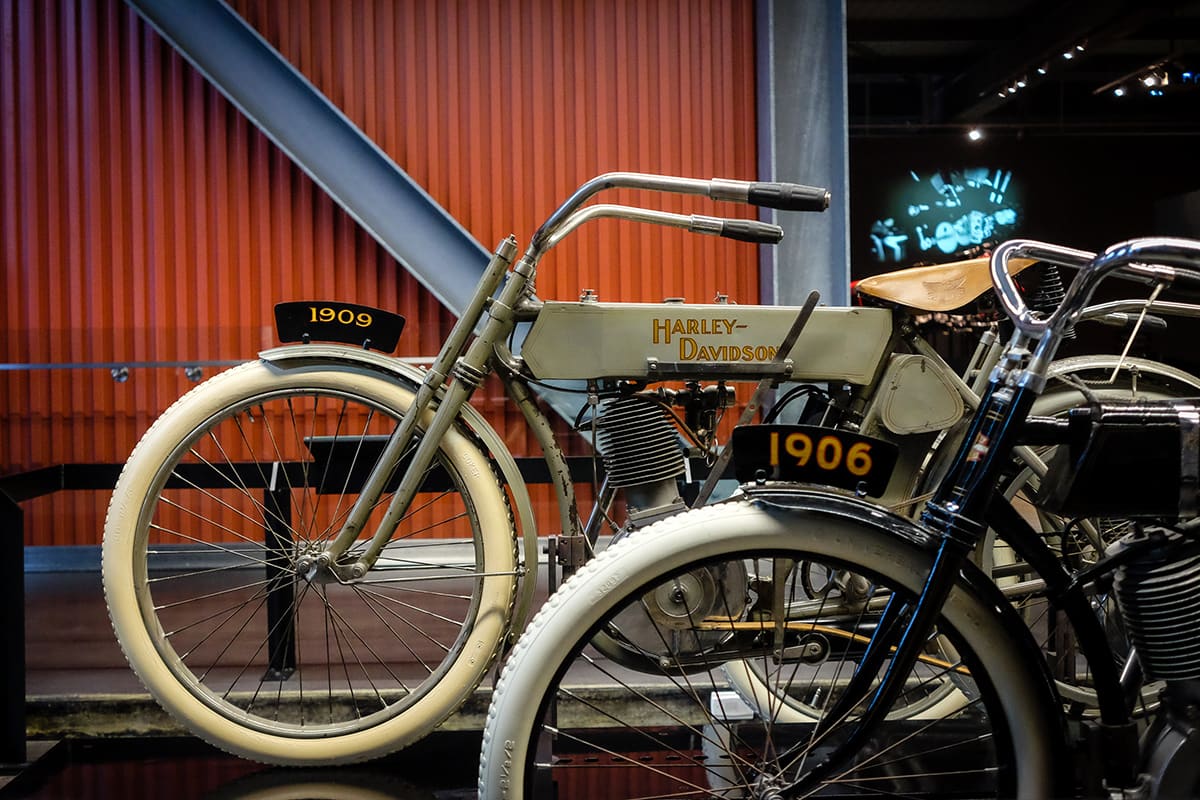
Still, squeezing in a H-D Museum visit while visiting Milwaukee earlier this year, was a no-brainer. And even as a non-enthusiast, I found plenty to entertain and inform me. If anything, I walked out with a deeper affinity for the ‘Merican marque than I walked in with.
It helped that our tour guide was a senior curator at the museum—and that he was deeply passionate about the brand and its history. A human vault of knowledge, he had us hooked with his rare insights and entertaining stories.
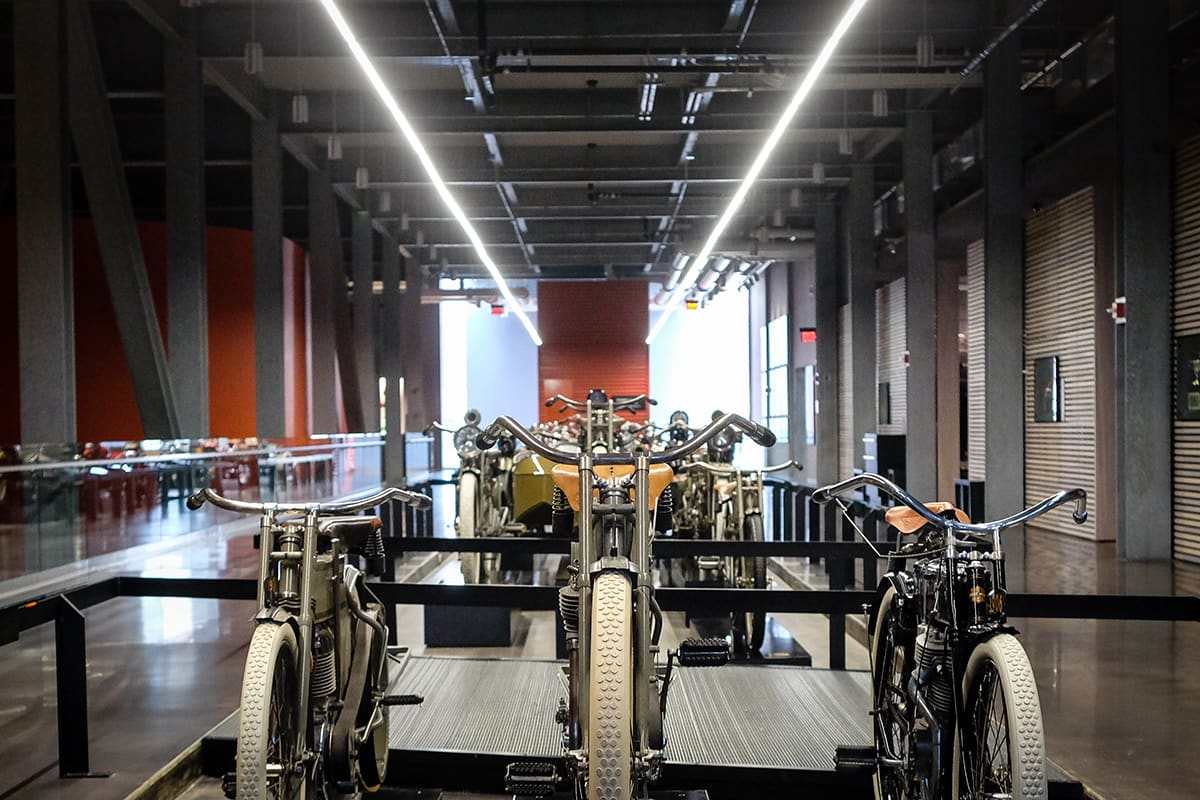
Our tour started on the museum’s top level—the centre passageway dominated by a procession of bikes that represents Harley’s early years. Running alongside it is a series of smaller, interconnected galleries, taking you through the Motor Co.’s history in chronological order.
Harley’s first motorised cycle dominates the first side gallery, enclosed in glass case. On the floor, you’ll find a rectangle drawn on the ground measuring the exact dimensions of the backyard shed that William S. Harley and Arthur Davidson birthed the company in (a measely 3 m x 4.6 m).

Photos of that shed and the fledging days of the company line the wall, along with paraphernalia like the first brochures and sales training booklets. Take your time, and you’ll be rewarded with a fascinating glimpse into how H-D slowly grew into the mega-brand it is today—and the challenges they faced along the way.
Highlights include vintage ad material, from a campaign where Harley portrayed motorists as dangerous, with the good-guy policeman on the Harley-Davidson patrolling the streets. Then there’s the post-war display, complete with bikes kitted to the nines for combat. We learnt how H-D sold these bikes to GIs after the war, who stripped off everything they didn’t need—kick-starting the bobber movement in the process.
Across from these mini-galleries lie treats like the engine room, where a Knucklehead engine is displayed in exploded form. And as you cross from one side of the museum’s upper level to the other, you pass by the tank wall.

It’s a gallery of Harley’s tank graphics through the ages, each expertly painted onto a half-tank mold. Along the bottom of the display, you’ll find info cards expanding on each graphic’s story. (Although they represent dark period in Harley’s history, the AMF-era graphics are by far my favourites.)
Once you’ve passed the tank wall, you run into a few ‘staff only’ areas. Unless your tour guide has the keys to the kingdom—like ours did. Since we were there on Harley-Davidson’s invitation, nothing was off-limits.
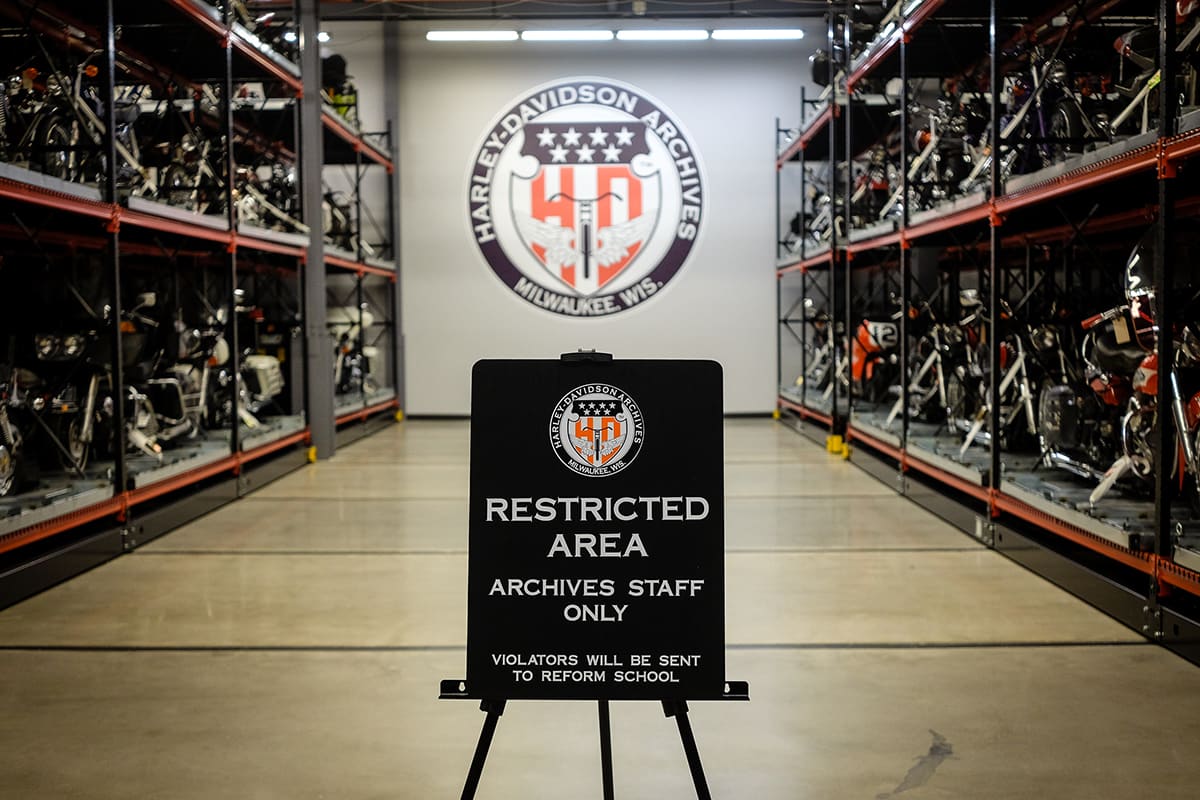
There’s a lot of well-preserved vintage goodness packed into the museum’s display—but there’s even more stashed away in the archives. There’s so much, in fact, that everything’s stored in electrical mobile shelving, to save as much space as possible. Getting to see original posters and photographs in the flesh is a treat. Ditto for the rows upon rows of historic Harley motorcycles in the ‘bike archive.’

Then there’s the privilege of hearing all the behind-the-scenes stuff of how certain pieces were discovered, or why they’re included a particular exhibit. It gives you a deeper appreciation of what it takes to represent the history of such an iconic brand.
We spent enough time diving into all of that to completely run out of time, so the rest of the museum was a blur. We breezed past the board track racing display; an actual replica of a section of board track, mounted at a full 45 degrees with race bikes mounted up on it. We cruised by the custom bikes on show, where I’m sure I spotted a Captain America replica out the corner of my eye.
At one end of the museum, brand new H-D models sit neatly arranged, with signs inviting visitors to try them on for size. Not far away, three historic Harley race bikes share a stage: track, flat track and dirt, all resplendent in orange.
Everyone has their own perception of the Motor Co. But if you want to expand your understanding, brush up on your history or just ogle an endless supply of rare and special motorcycles, the Harley-Davidson Museum is a great place to start.
Images by Wesley Reyneke





